Videos

REAL PEOPLE WITH ALAGILLE SYNDROME TAKING LIVMARLI
Hear from real patients and their families as they share their unique experiences—life before diagnosis, challenges before starting LIVMARLI, and the difference LIVMARLI is making in their lives.*
*Not all patients taking LIVMARLI will have the same experiences.
Meet Emma and Abby
Emma and Abby share their young-adult perspectives on growing up with cholestatic pruritus and finally starting to find relief with LIVMARLI.
Chapters


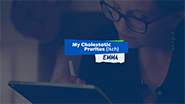
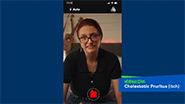


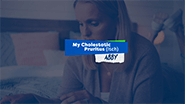








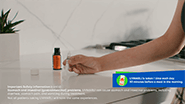

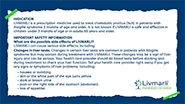
[00:00:00]
[music]
Emma: I’m Emma. I’m 19, and I’m from Washington State. I was diagnosed with Alagille syndrome very soon after birth. [00:00:30] I had the symptoms of jaundice, prominent facial features, and low bile duct count. When I was about 4 or 5 years old, I realized I had Alagille syndrome. That meant for me that I had a lifelong illness that I had to manage.
[music]
One of the main symptoms for Alagille syndrome is cholestatic pruritus. My itch was pretty severe. It’s [00:01:00] like bugs under your skin almost. It’s just something you constantly have to soothe and you just can never soothe it. Daily life for me would be very disrupted. I would have to itch before I even went into public. I managed the itch by scratching, or if it was a lot, I would take ice baths and lotion stuff, but they’re temporary relief. It was hard to maintain friendships, relationships with people along with schooling. It was very [00:01:30] hard to focus because my main focus was just the itching. It’s very sensory, overwhelming.
The itching just became my everyday life. No matter how severe it was or how bad it was that was just my life. I just lived with it. Looking back, I’m like, that was not normal. I got on the clinical trial for LIVMARLI when I was 12. I’m 19 now, so [00:02:00] that was 7 years. I’ve been taking it every day since then.
[music]
Abby: I’m Abby. I’m 26 years old and I’m from Huntsville, Alabama. I was 11 months old when I was diagnosed with Alagille syndrome. The symptoms that led me to being diagnosed was I was itching from the time that I was able to start to itch. I was not growing, and I was jaundiced. [00:02:30] I believe at the age of 10 and 11, I started to understand what Alagille was and what it meant for the rest of my life. I knew that I was always going to have something wrong with my liver, and I knew that I was always going to have to go to doctor’s appointments and take medication, and those are just some of the symptoms that stood out to me.
[music]
My itching would start bright and early in the morning and progressively get worse throughout the day. Some of the medications, physicians [00:03:00] were offering me were cholestyramine and hydroxyzine. They had me on rifampin at one point, and none of those helped. Then at around almost 2 years old, I had a biliary diversion and I lived with that for my entire life, until I was 19. Even with the diversion, the itching was still there. I still scratched my feet on the [00:03:30] carpet.
The palms of my hands would itch. My legs would itch, so I would still have to try to use other methods to help my itching. It was very difficult to go to school and have social interactions and do things. As a kid with the pruritus, you feel very alone a lot of the time. Looking back, the pruritus has always been normalized for me. It was just something I had to live with.
I have a really good support system, always have, but [00:04:00] I wish I had physicians advocating a little bit more for me because the pruritus is a real thing and it is very debilitating. It is awful. I encourage anyone that your pruritus affects your day-to-day life, and that you have normalized to talk to your physician and let them know how it affects you and see where you can go from there. [00:04:30]
Emma: Hello.
Abby: Hi.
Emma: At what point did you realize how bad the itching was? Did you find that out or someone else had to point that out?
Abby: I mean, I always knew it was bad. I always knew it was bad. It was no secret. I feel like when [00:05:00] my husband and I went to a doctor’s appointment maybe 2 years back, and he asked the doctor if there was anything that would help with the itching, I think that’s really when it was like, “Oh, okay. It really is like that noticeable and that bad.”
Emma: Yeah. I feel the same way. I knew it was bad, but I think it was me seeing the reactions of other people. We’d go in public, my mom would get so strict. She’s like, “Stop itching. Stop itching.” She’d whisper it to me. I’m like, “I didn’t even know [00:05:30] I was doing it.” Or, at school, I remember I liked this one boy, and I’d be talking to him. He’s like, “What are you doing?” I find out I’m doing this the whole time, while I’m talking to him. At what point did the itching get so bad that you’re like, “I need to get something like treatment?”
Abby: Well, my parents made that decision for me early in life, and I had the diversion done, but then when I was 19, I got it reversed. After the reversal, [00:06:00] I knew that it was going to be tough because even going from one thing to another, your body has to have time to adjust. I tried several different things, like the allergy medications you can take. Nothing helped me sleep all the way through the night if I was having a bad day. I think I remember we used an anti-itch lotion, and I don’t remember it helping at all.
[music]
Abby: [00:06:30] How did you hear about LIVMARLI? How old were you? How did that all come about?
Emma: I was about like fifth grade. My mom’s always been a big advocate, so she’s always on the hunt for something. She found about LIVMARLI. I got in the clinical trial. I was in that for about a month before I got on the medicine. Then we took like a week or 2, and I [00:07:00] started seeing results. What about you? How did you hear about LIVMARLI?
Abby: A physician reached out to me to educate me about LIVMARLI, and then the physician got in contact with my doctor after I said I was willing to do it and then I was able to start on it. I’m very glad he reached out to me. If he didn’t, I don’t think I would be in the place I am today. I would still be itching all the time.
Emma: I don’t [00:07:30] know what my life would be like. I don’t really want to go back to the itching.
Abby: That’s how I feel too. I feel like I lived my whole life with it, so I don’t want to go back.
Emma: When I started taking LIVMARLI, for the first couple weeks, I noticed myself I didn’t need as much time itching, or I could focus in class. That was a big one, where I wasn’t constantly fidgeting.
Abby: I started noticing being able to sleep better and [00:08:00] stay asleep all night long. Before, sometimes I would wake up in the middle of the night and have to scratch or itch my feet. I think it took about 3 or 4 weeks before I could actually sleep throughout the night.
Emma: I think it was the conversations I had with people, my mom, especially, I’d be talking to her, she’s like, “You haven’t itched once in the last 5 minutes.” I’m like, “I haven’t.” I’ve just not been doing it, sitting perfectly still.
Abby: I think mine was [00:08:30] more at work. I sit in a cube all day, so I would get antsy and you’d want to itch, but when I was sitting at work for all day long and haven’t itched a single time, I was like, “Wow.” I felt better. I was able to sleep, and I wasn’t so groggy in the mornings because I was able to sleep because I’m not itching as much.
[music]
Abby: My physician told me of several different side effects while taking LIVMARLI, including stomach pain, diarrhea, vomiting. I only experienced stomach pain 1 time, and it subsided after eating a larger meal.
Why do you think it is important to take LIVMARLI every day?
Emma: It helps me manage my itching, and it just lets me go my daily life without worrying about the itching as much. What about you?
Abby: I want to live my [00:09:30] life like this. I love to travel. I love to go do things, and it’s very important to me to manage my pruritus and make sure my itching is at bay.
[music]
Emma: Why do you think it’s so important for us to talk about the pruritus?
Abby: Because I think that a lot of people struggle with it, and I think that a lot of people feel like there’s no way out of it, and they have no hope. [00:10:00] I think it’s really important to talk about your experiences and how you’ve dealt with it, and then where you are now so people can understand there are opportunities out there and there is hope.
Emma: There’s a lot of unknowns when I was growing up. I didn’t know what was going to happen. I didn’t know what to do, so seeing someone else’s experience is a nice guide, a shining light in the dark.
Speaker 1: INDICATION
LIVMARLI is a prescription [00:10:30] medicine used to treat cholestatic pruritus (itch) in patients with Alagille syndrome 3 months of age and older. It is not known if LIVMARLI is safe and effective in children under 3 months of age or in adults 65 years and older.
INDICATION
LIVMARLI is a prescription medicine used to treat cholestatic pruritus (itch) in patients who are 3 months of age and older with Alagille syndrome.
It is not known if LIVMARLI is safe and effective in children with Alagille syndrome who are under 3 months of age. It is not known if LIVMARLI is safe and effective in adults who are 65 years of age and older.
IMPORTANT SAFETY INFORMATION
What are the possible side effects of LIVMARLI?
LIVMARLI can cause serious side effects, including:
Liver injury. Changes in certain liver tests are common in patients but may worsen during treatment with LIVMARLI. These changes may be a sign of liver injury and can be serious. Your health care provider should do blood tests and physical exams before starting and during treatment to check your liver function. Tell your health care provider right away if you get any signs or symptoms of liver problems, including:
- nausea or vomiting
- your skin or the white part of your eye turns yellow
- dark or brown urine
- pain on the right side of your stomach (abdomen)
- fullness, bloating, or fluid in your stomach area (ascites)
- loss of appetite
- bleeding or bruising more easily than normal, including vomiting blood
Stomach and intestinal (gastrointestinal) problems. LIVMARLI can cause stomach and intestinal problems, including diarrhea and stomach pain during treatment. Diarrhea can also cause the loss of too much body fluid (severe dehydration). Your health care provider may advise you to monitor for new or worsening stomach problems, including stomach pain, diarrhea, blood in your stool, or vomiting
Tell your health care provider right away if you have any new or worsening signs or symptoms of stomach and intestinal problems, including:
- diarrhea
- more frequent bowel movements than usual
- stools that are black, tarry, or sticky, or have blood or mucous
- severe stomach-area pain or tenderness
- vomiting
- urinating less often than usual
- dizziness
- headache
A condition called Fat-Soluble Vitamin (FSV) Deficiency caused by low levels of certain vitamins (vitamin A, D, E, and K) stored in body fat. FSV deficiency is common in patients with Alagille syndrome but may worsen during treatment. Your health care provider should do blood tests before starting and during treatment, and may monitor for bone fractures and bleeding, which are common side effects
Tell your health care provider about all medicines that you take, as LIVMARLI may interact with other medicines. If you take a medicine that lowers cholesterol by binding bile acids, such as cholestyramine, colesevelam, or colestipol, take it at least 4 hours before or 4 hours after you take LIVMARLI.
Your health care provider may change your dose, or temporarily or permanently stop treatment if you have certain side effects.
LIVMARLI is taken by mouth, 1 time each day, 30 minutes before a meal in the morning. Be sure to use the provided oral dosing dispenser to accurately measure the dose of medicine.
These are not all of the possible side effects of LIVMARLI. For more information, ask your health care provider or pharmacist. Call your doctor for medical advice about side effects. You may report side effects to the FDA at 1-800-FDA-1088.
[music]
[00:13:00] [END OF AUDIO]

